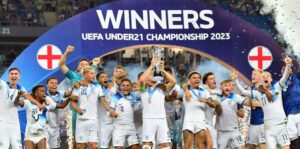Navigating the Climate Juggernaut: Insights into Warming Oceans and Climate Change
The Climate Juggernaut: Unveiling the Impact of Warming Oceans on Global Heatwaves
As scorching temperatures grip various parts of the world, including Texas, the southwest United States, the UK, North Africa, the Middle East, and Asia, the European Centre for Medium-Range Weather forecasts has declared June as the hottest month on record globally. The intense heat continues, with the European Union’s climate and weather service, Copernicus, reporting that the past week witnessed the three hottest days ever recorded. This relentless heatwave aligns with climate models’ predictions and serves as a stark reminder of the consequences of increasing greenhouse gas emissions.
While air temperature is often at the forefront of our concerns, it is crucial to recognize that the majority of heat stored near Earth’s surface resides in the oceans. This spring and summer, record-breaking ocean temperatures have been observed, with the North Atlantic experiencing the highest surface water temperatures ever documented. The coasts of the UK have encountered a marine heatwave, surpassing seasonal norms by up to 5°C. Concurrently, an El Niño event is developing in the tropical Pacific, further contributing to elevated sea surface temperatures.
The profound impact of these warming oceans extends beyond maritime regions. Higher sea surface temperatures translate into increased air temperatures, amplifying the intensity and duration of heatwaves. The continuous rise in greenhouse gas emissions drives the accumulation of heat in the surface ocean. Although some of this excess heat is mixed into deeper ocean layers, phenomena like El Niño can bring it back to the surface, subsequently releasing it into the atmosphere.
While this exceptional heatwave may seem extraordinary, it is regrettably becoming the new normal due to climate change. Greenhouse gas emissions continue to rise annually, with energy-related CO2 emissions increasing by almost 1% in the previous year alone. Consequently, the risk of heatwaves intensifies, as they become more frequent, hotter, and longer than they would be without global warming.
Experts warn that the developing El Niño could propel 2023 to become the hottest year on record, temporarily surpassing the critical 1.5°C warming threshold. Without significant reductions in emissions, temperatures will persistently rise, triggering irreversible transformations in ecosystems worldwide. The consequences are already evident, with record-breaking June temperatures causing mass fish fatalities in rivers and canals in the UK. Similar disruptions have been witnessed in regions like Australia and the Mediterranean, where entire ecosystems have been altered, kelp forests have disappeared, and marine life has suffered.
The world faces a crucial race against time. While the path towards an increasingly hot and unstable climate seems inevitable, humanity possesses the necessary technologies and tools to mitigate emissions. The question remains: Can we swiftly and decisively curb the climate juggernaut, ensuring that the impacts of global warming remain within manageable limits?








